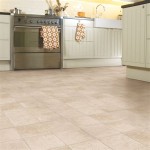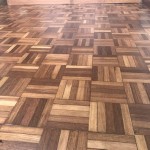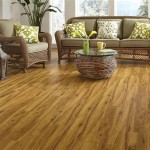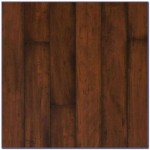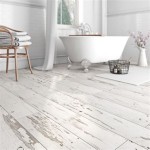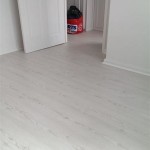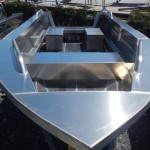Understanding Waterproof Deck Flooring Options
Deck flooring provides an outdoor living space that enhances property value and recreational enjoyment. However, traditional decking materials, such as wood, are susceptible to water damage, leading to rot, decay, and structural instability. Waterproof deck flooring solutions offer a durable and long-lasting alternative, protecting the underlying structure and extending the lifespan of the deck.
The purpose of this article is to explore the various types of waterproof deck flooring available, their advantages and disadvantages, and factors to consider when selecting the appropriate material for a specific application. This comprehensive overview provides valuable information for homeowners, contractors, and architects seeking effective and reliable waterproof decking solutions.
Key Considerations for Waterproof Deck Flooring Selection
Selecting the right waterproof deck flooring requires a careful evaluation of several critical factors. These factors influence the performance, longevity, and overall cost-effectiveness of the decking system. Understanding these considerations is crucial for making an informed decision that aligns with project requirements and budget constraints.
Climate and Weather Conditions: The prevailing climate significantly impacts the choice of decking material. Regions with heavy rainfall, snow, or extreme temperature fluctuations demand materials with exceptional resistance to water absorption, freeze-thaw cycles, and UV degradation. Consider the specific weather challenges of the location to ensure the chosen flooring can withstand the environmental stresses.
Deck Usage and Traffic: Decks intended for heavy foot traffic, frequent entertaining, or use by pets require flooring with high durability and resistance to wear and tear. Choose materials that can withstand scratches, scuffs, and impacts without compromising their waterproof integrity. The expected level of usage influences the required strength and resilience of the decking surface.
Budget and Installation Costs: The initial cost of the decking material and the associated installation expenses are significant factors in the decision-making process. While some waterproof decking options may have a higher upfront cost, their long-term durability and reduced maintenance requirements can result in significant cost savings over the lifespan of the deck. Obtain detailed quotes from qualified contractors to accurately assess the total cost of the project.
Aesthetics and Design Preferences: The appearance of the deck flooring should complement the architectural style of the property and reflect personal aesthetic preferences. Waterproof decking materials are available in a wide range of colors, textures, and patterns, offering numerous design possibilities. Consider the overall visual impact and choose a flooring option that enhances the overall appeal of the outdoor living space.
Maintenance Requirements: Different waterproof decking materials require varying levels of maintenance. Some options, such as composite and PVC decking, are virtually maintenance-free, requiring only occasional cleaning. Others, such as certain types of coatings, may require periodic reapplication to maintain their waterproof properties. Evaluate the maintenance requirements and select a flooring option that aligns with the available time and resources.
Types of Waterproof Deck Flooring
The market offers a variety of waterproof deck flooring options, each with its unique properties and performance characteristics. Understanding the different types of materials allows for a more informed selection process, ensuring the chosen flooring meets the specific requirements of the project.
PVC (Polyvinyl Chloride) Decking: PVC decking is a synthetic material composed of polyvinyl chloride plastic. It is inherently waterproof, resistant to moisture, and highly durable. PVC decking is available in various colors, textures, and profiles, offering design flexibility. It is also resistant to fading, staining, and insect damage, making it a low-maintenance option. Installation typically involves a hidden fastener system, creating a clean and seamless appearance.
Composite Decking: Composite decking is manufactured from a combination of wood fibers and recycled plastic. It offers a balance of durability, aesthetics, and environmental friendliness. While not entirely waterproof, high-quality composite decking is highly water-resistant and less susceptible to rot and decay than traditional wood. The plastic component provides resistance to moisture, insects, and UV damage. Composite decking is available in a range of colors and wood-grain patterns, mimicking the appearance of natural wood.
Different types of composite decking exist, each with varying degrees of water resistance. Capped composite decking features a protective outer layer that provides enhanced protection against moisture, staining, and fading. This type of composite decking is generally more waterproof than uncapped options.
Liquid Applied Waterproofing Membranes: Liquid applied waterproofing membranes are coatings applied to the deck surface to create a seamless and waterproof barrier. These membranes are typically composed of polyurethane, epoxy, or acrylic polymers. They are applied in multiple layers to achieve the desired thickness and level of protection. Liquid applied membranes are suitable for both new construction and renovation projects. They can be applied over existing concrete, plywood, or other solid surfaces. These membranes offer excellent flexibility, allowing them to accommodate movement and prevent cracking. A top coat or sealant is often applied over the membrane for added protection and aesthetics. While the membrane itself is waterproof, the longevity of the system depends on proper installation and maintenance of the top coat.
EPDM (Ethylene Propylene Diene Monomer) Rubber Decking: EPDM rubber is a synthetic rubber material known for its exceptional durability, flexibility, and weather resistance. EPDM rubber decking provides a completely waterproof surface and is resistant to UV damage, ozone, and extreme temperatures. It is available in rolls or sheets that are glued down to the deck substrate. EPDM rubber decking is commonly used in commercial applications, such as rooftop decks and balconies, due to its ability to withstand heavy traffic and harsh environmental conditions. It offers excellent slip resistance and sound dampening properties.
Tile and Stone Decking: Tile and stone can be used as waterproof deck flooring when installed over a properly waterproofed substrate. The substrate must be carefully prepared and sealed to prevent water from penetrating and damaging the underlying structure. Waterproofing membranes, such as liquid applied membranes or sheet membranes, are typically used to create a watertight barrier between the substrate and the tile or stone. Proper drainage is essential to prevent water from pooling on the surface. Grout lines must be sealed regularly to maintain the waterproof integrity of the system. Tile and stone decking offers a durable and aesthetically pleasing option for outdoor living spaces.
Interlocking Deck Tiles: Interlocking deck tiles provide a convenient and easy-to-install waterproof flooring solution. These tiles are typically made of plastic, rubber, or composite materials. They interlock together to create a seamless and waterproof surface. Interlocking deck tiles are available in various colors, patterns, and textures. They are suitable for use on balconies, patios, and decks. The raised design of the tiles allows for water to drain away from the surface, preventing pooling and promoting airflow. Interlocking deck tiles are a cost-effective and DIY-friendly option for creating a waterproof deck surface.
Installation and Maintenance Best Practices
Proper installation and regular maintenance are essential for maximizing the lifespan and performance of waterproof deck flooring. Following best practices ensures the decking system remains watertight, durable, and aesthetically pleasing for years to come.
Substrate Preparation: The substrate, or the surface beneath the decking material, must be clean, dry, and structurally sound before installation. Any existing damage, such as cracks or rot, must be repaired. Uneven surfaces should be leveled to ensure a smooth and even base for the decking. Proper substrate preparation is crucial for preventing water infiltration and ensuring the long-term stability of the decking system.
Waterproof Membrane Installation: When using liquid applied waterproofing membranes, it is essential to follow the manufacturer's instructions carefully. Apply the membrane in multiple layers, ensuring each layer is fully cured before applying the next. Pay close attention to details around edges, corners, and penetrations to prevent water from seeping in. Use appropriate tools and techniques to ensure proper adhesion and a seamless finish. Regular inspections and maintenance of the waterproof membrane are necessary to identify and repair any damage before it leads to water intrusion.
Proper Drainage: Adequate drainage is essential for preventing water from pooling on the deck surface and damaging the decking material. Ensure the deck is properly sloped to allow water to drain away from the building. Install gutters and downspouts to direct rainwater away from the foundation. Clean gutters regularly to prevent clogs and ensure proper water flow. Consider using drainage mats or spacers beneath the decking material to promote airflow and prevent moisture buildup.
Sealing and Caulking: Seal all joints, seams, and penetrations with a high-quality waterproof sealant or caulk. This helps prevent water from seeping into the underlying structure. Inspect sealants regularly and reapply as needed to maintain their effectiveness. Pay close attention to areas around posts, railings, and other deck components.
Regular Cleaning: Clean the deck surface regularly to remove dirt, debris, and stains. Use a mild soap and water solution and a soft-bristled brush. Avoid using harsh chemicals or abrasive cleaners, as they can damage the decking material. Pressure washing can be used with caution, but it is important to use a low-pressure setting to avoid damaging the surface.
Inspections and Repairs: Conduct regular inspections of the deck flooring to identify any signs of damage, such as cracks, splits, or loose fasteners. Repair any damage promptly to prevent it from worsening. Replace damaged or deteriorated decking boards or tiles as needed. Address any water leaks or drainage issues immediately to prevent further damage to the deck structure.
By carefully considering these factors, homeowners and contractors can select a waterproof deck flooring option that provides long-lasting protection, enhances the aesthetic appeal of the outdoor living space, and minimizes maintenance requirements.

Waterproof Flooring Ultimate T G Watertight Deck Board

Waterproof Deck Flooring Best Ideas 6 Choices For You

How To Create A Waterproof Area Under An Elevated Wood Deck

Wooden Flooring Poolside Greenhouse Waterproof Interlocking Patio Deck Tiles

Outdoor Balcony Deck Ultimate T G Watertight Flooring Board

Vinyl Patio Deck Flooring Tufdek Waterproof Decking

Waterproof Decking System By Duxxbak Hdg Building Materials

Woven Bamboo Waterproof Yacht Outdoor Deck Flooring No Formaldehyde China Floor Decking Made In Com

How To Create A Waterproof Area Under An Elevated Wood Deck

Stay Dry And Stylish With Watertight Decks Li Decking

